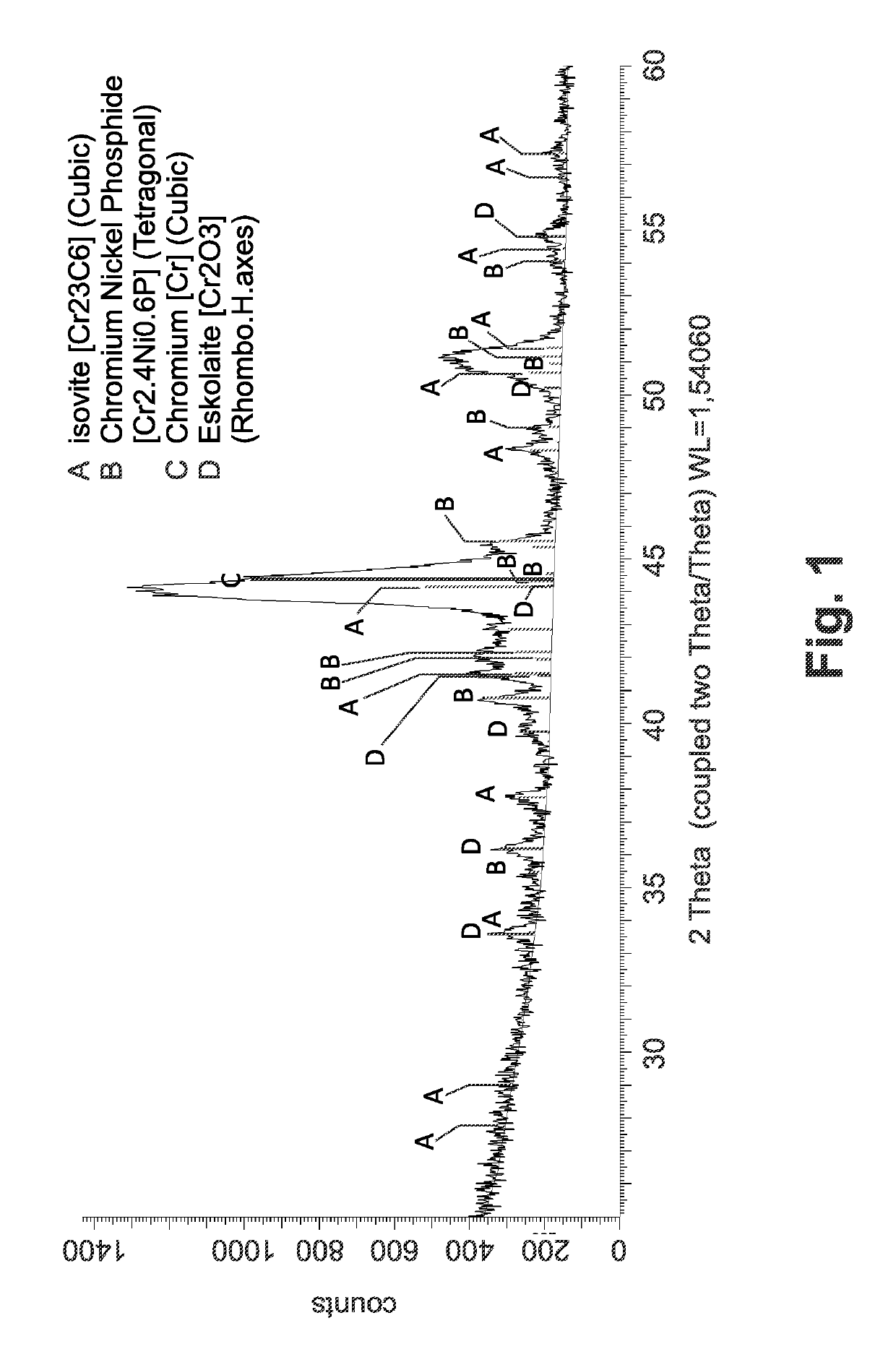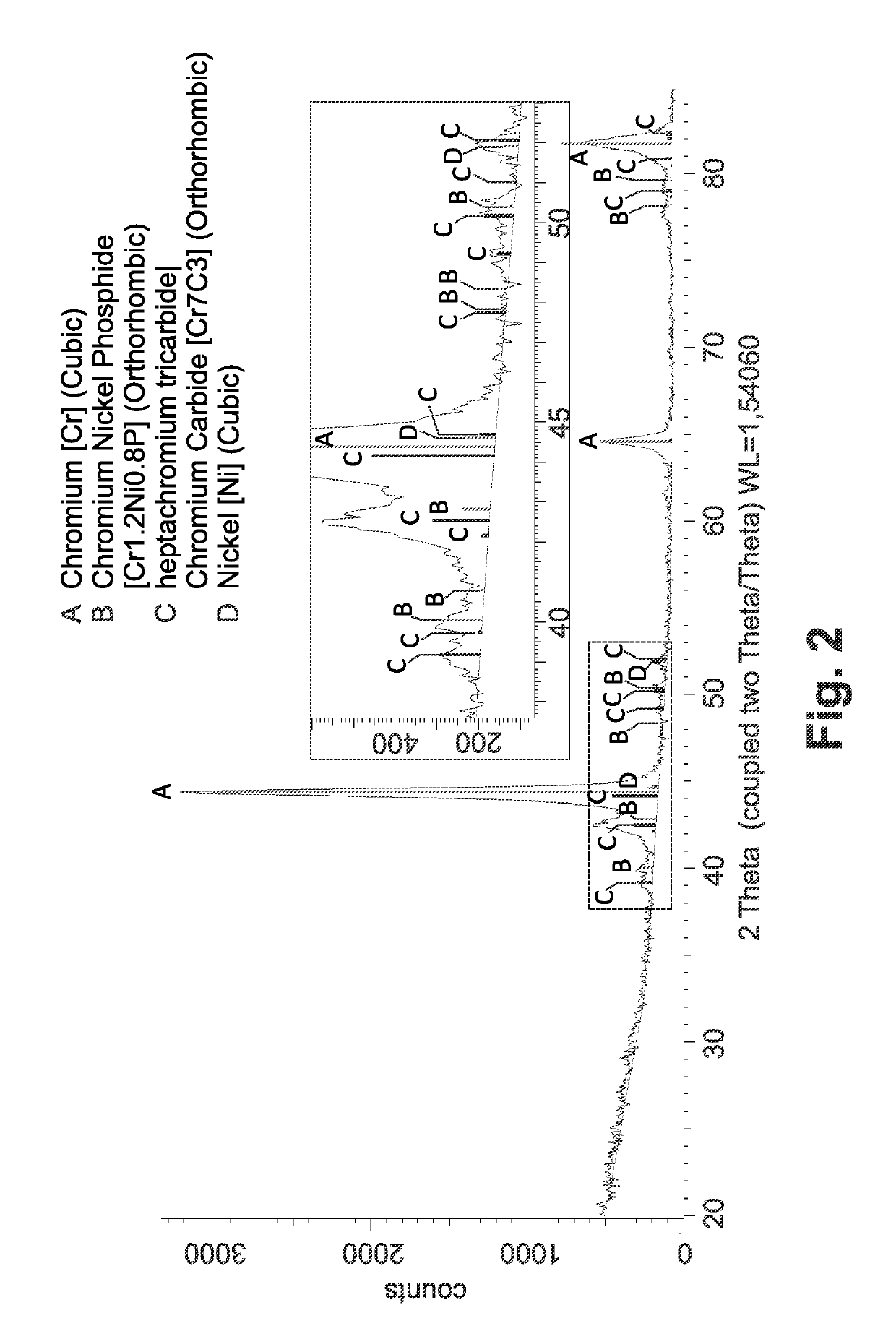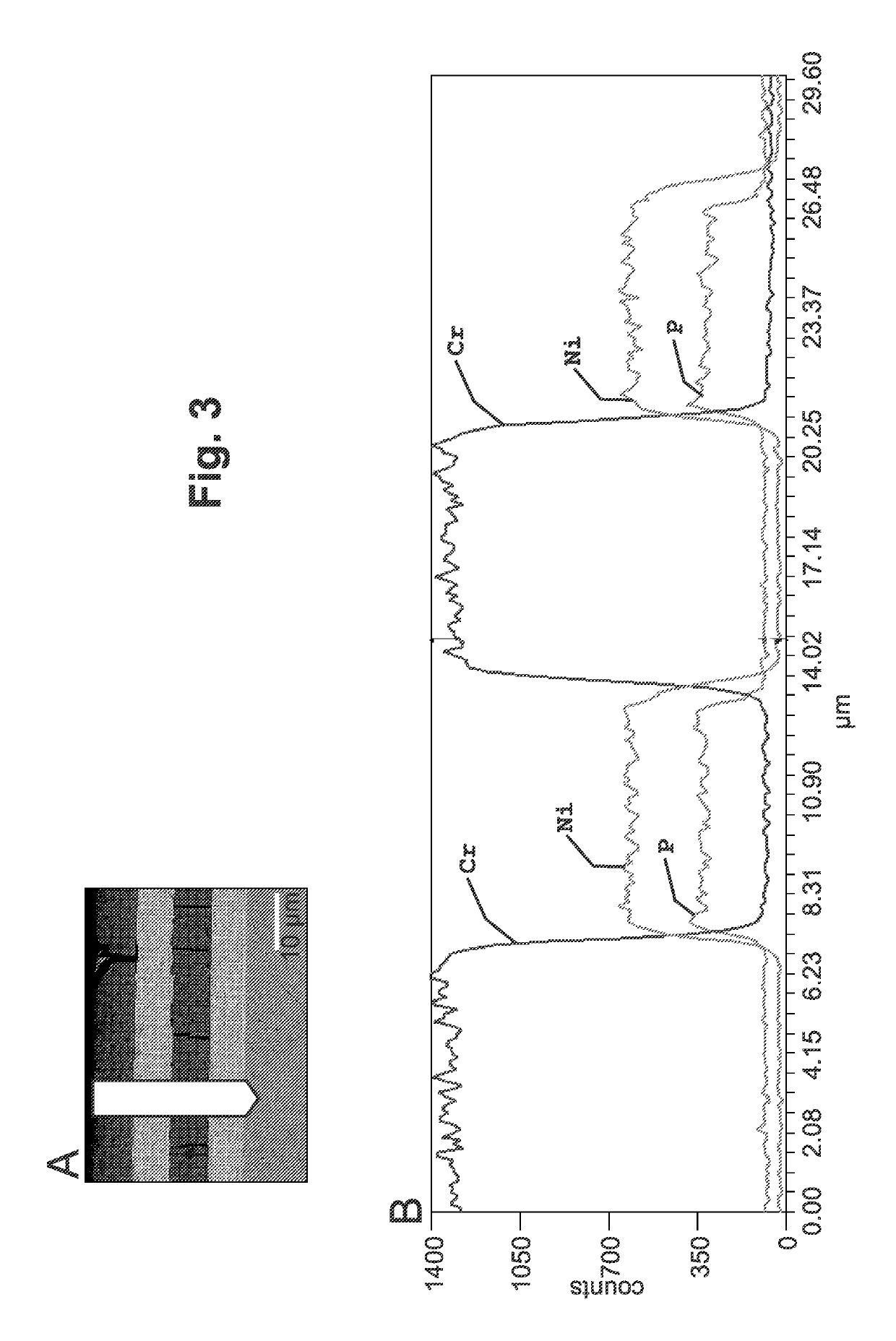Chromium-containing coating, a method for its production and a coated object
a technology of chromium-containing coatings and coatings, applied in the direction of superimposed coating processes, chemical coatings, liquid/solution decomposition coatings, etc., can solve the problems of high toxic nature of processes, inability to produce coatings through trivalent chromium solutions, and inability to produce chromium plating processes of prior art. to achieve excellent corrosion resistance, less toxic, and high and adjustable hardness
- Summary
- Abstract
- Description
- Claims
- Application Information
AI Technical Summary
Benefits of technology
Problems solved by technology
Method used
Image
Examples
example 1
on of a Chromium-Containing Coating
[0070]A steel object was coated with a coating according to the present disclosure. A nickel strike layer was first deposited on the steel substrate (step i)) Then, a 3 μm thick NiP layer was chemically deposited on the object (step a)), after which a 5 μm thick Cr layer was electroplated on it (step b)). This was followed by a brief acid treatment with 30% (w / w) HCl and deposition of a 1 μm Ni strike layer (step i)). After this, steps a) and b) were repeated. Then, the object was heated in a furnace at 850° C. for 30 minutes to amend the mechanical and physical properties of the coating and to produce a CrNiP phase (step c).
[0071]X-ray diffraction spectra (XRD) of the chromium-containing coating were measured to get information about the crystalline structure of the coating after heat treatment. Most crystalline materials have unique X-ray diffraction patterns that can be used to differentiate between materials. The peaks of the XRD spectrum were ...
example 2
on of a Chromium-Containing Coating
[0074]A steel object (in this case, a shock absorber) was coated with a coating according to the present disclosure. First, a 5 μm thick NiP layer was chemically deposited on the object (step a)), after which a 7 μm thick Cr layer was electroplated on it (step b)). This was followed by 1-2-second acid treatment with 30% (w / w) HCl and the deposition of a 1 μm Ni strike layer (current density 2-5 A / dm−2, pH 1.6) (step i)), after which steps a) and b) were repeated. After this, the object was pre-heated at 400° C. with heat pulsing, which in this case was induction heating. After preheating the object was quenched with cooling liquid. The second heat treatment was again performed through induction heating, now at 750-800° C. and quenched with cooling liquid. The pre-heating and the second heat treatment formed step c) of the method according to the present disclosure.
[0075]FIG. 2 depicts a portion of the 2θ XRD spectrum of the coating prepared above a...
PUM
| Property | Measurement | Unit |
|---|---|---|
| thickness | aaaaa | aaaaa |
| thickness | aaaaa | aaaaa |
| thickness | aaaaa | aaaaa |
Abstract
Description
Claims
Application Information
 Login to View More
Login to View More - R&D
- Intellectual Property
- Life Sciences
- Materials
- Tech Scout
- Unparalleled Data Quality
- Higher Quality Content
- 60% Fewer Hallucinations
Browse by: Latest US Patents, China's latest patents, Technical Efficacy Thesaurus, Application Domain, Technology Topic, Popular Technical Reports.
© 2025 PatSnap. All rights reserved.Legal|Privacy policy|Modern Slavery Act Transparency Statement|Sitemap|About US| Contact US: help@patsnap.com



